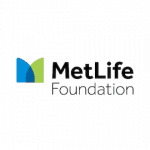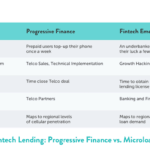Financial Inclusion Takes the Next Step: An Interview with MetLife Foundation President Dennis White
Editor’s note: Throughout 2017, NextBillion is organizing content around a monthly theme, dedicating special attention to a specific sector alongside our broader coverage. This post is part of our focus on financial inclusion for the month of June.
As NextBillion launches our new Financial Health site under the sponsorship of MetLife Foundation, we touched base with its president and CEO, Dennis White, to discuss the evolution of the financial inclusion movement, and the work the foundation is doing to advance it. In this wide-ranging interview, White discusses the foundation’s grant-making and investing approach, its ongoing challenges, and the lessons it has learned from both success and failure – along with his insights into the key issues and opportunities facing financial services providers in low-income communities.
James Militzer: You’ve been president and CEO of the MetLife Foundation for a little over eight years now. How has the foundation’s focus changed in that time, and what broad changes have you seen in the financial inclusion space?
Dennis White: Up until 2012, we were a pretty typical corporate foundation, in many ways. We did a lot of different things across many different areas: arts and culture, community development, health, education. And we did good work with many great nonprofit organizations. We were almost exclusively focused on the U.S., where MetLife’s business activities were. But in late 2010, MetLife became a much more global company, with the acquisition of a company called Alico, and that brought us into over 40 new markets across the globe. With this global expansion, the composition of MetLife Foundation’s board changed to have much more global representation – we had the presidents from the different regions on the board, and so it became a much more global organization.
And as MetLife was changing, we thought it was time to rethink the foundation’s work – what we were doing, and where we were doing it. So we went through a strategic review of our activities, and considered a lot of different work – some related to the work we were already doing in the aging space, some in the affordable housing area and even medical research. But we ultimately decided that working in financial inclusion was a good alignment with the company and with our global footprint and with the needs of low-income communities. So in 2013 we decided to focus 60 to 70 percent of our resources on financial inclusion. We continued to do important work across areas like health, education, arts and culture, but we really began to focus purposefully on financial inclusion.
As for the broad changes we’ve seen in financial inclusion: For me, when I look at the field, obviously technology is having a big impact, like all other areas of society. Mobile phones are providing access to financial services that couldn’t even be imagined years ago – so that’s a big change.
In some of the countries where we work, national governments have embraced financial inclusion and are launching programs with that focus, whether it’s in India or Mexico. And we’ll see how those succeed – I think there are some strengths, and some challenges, in those programs, so that’s another change.
And there’s also a better appreciation that people need to use financial services in order to understand them, and to benefit from them. So we’re very much a proponent of what we call “edu-action”: interacting with the financial service sector or product to the benefit of the low-income customer, rather than sitting in a classroom and learning about it. So those are some trends and areas we’re focused on.
Militzer: According to your 2016 Annual Report, the MetLife Foundation made USD 43 million in contributions, with 70 percent going toward financial inclusion grants. How does the foundation prioritize these contributions in terms of nonprofits vs. for-profit businesses? And has the way the foundation allocates funding changed, as financial inclusion products and services have matured or gathered momentum among consumers?
White: We work with both nonprofits and for-profits, but there are definitely many more nonprofits in the portfolio, which you would expect. But it’s not so much a prioritization of nonprofits or for-profits, it’s really about finding the programs that work. We have worked with some for-profit institutions that have a broad or large customer base, and that has been intentional, because we really want to be able to reach low-income people with good financial products and services and have a win-win for the financial institution, too. And some of the for-profits fall into that category, while the nonprofits are sometimes a bit smaller and don’t have the same reach. So that desire for scale and reach has pushed us to some for-profit partners. We’re also doing more on the digital side to reach customers, and a behavioral economics approach is also being woven into our work for better reach, and that work is being done with both nonprofits and for-profits.
Militzer: Could you mention a few of the for-profit companies you work with?
White: Sure, we have a program called OPTIX, with Bankable Frontier Associates, and they’re doing some work with Banco WWB in Colombia, a commercial bank. The OPTIX project also includes Acreimex in Mexico (a financial co-op), CEP in Vietnam (an MFI), and Sajida Foundation in Bangladesh (also an MFI). All these institutions – whether they are a for-profit, nonprofit, co-op or MFI – are reaching a relatively large number of customers, which we like, and are much different organizations than the foundation would have supported just a few years ago.
We are also the lead funder of Common Cents Lab out of Duke University. Common Cents is providing technical assistance in behavioral economics to both for-profit and nonprofit groups here in the U.S. Again, a much different approach for us but we are looking for the best groups in financial inclusion or financial health and their organizational structure matters less.
Militzer: MetLife Foundation has made considerable investments focused on solving urban problems – does your impact investing work also extend to financial inclusion, and if so, where are these investments focused?
White: Our impact investments are just beginning to be aligned with the foundation’s financial inclusion strategy. Throughout our 30-year history in impact investing we have focused on traditional affordable housing deals, community development financial institutions (CDFIs), and nonprofit organizations in a range of areas, whether it’s health or community facilities. We are slowly building up the capability in our impact investment area to look at investments that align with our financial inclusion strategy, but also are global – outside the U.S., where the bulk of our investment experience has been. So we have invested in microinsurance activities, and some activities that expand the product offerings or otherwise strengthen MFIs in emerging markets. We’re an experienced impact investor domestically but new to global investments and financial inclusion so our expansion into the financial inclusion area will reflect that. We have a preference for making investments in diversified funds or co-investing, rather than making a direct investment in a financial inclusion startup or structuring a deal from scratch.
Our global impact investments will essentially have the same footprint that the foundation has in its grant-making, and also the same footprint MetLife has as a business organization. Although with that said, from time to time we’ll engage in activities outside our geographic footprint if it’s an investment that can be scaled or replicated in other markets.
Militzer: Broadly speaking, how has your experience with impact investing been so far, and do you see it as a growing focus of your work – why/why not?
White: We have 30 years of experience with impact investing here in the States, mostly in affordable housing and CDFIs, as I mentioned, and our experience has been very positive. In fact, we’re currently going through a review of that 30-year history of about $700 million in impact investing, to document what we’ve accomplished and learned. But the default rates have been extremely, extremely low. With that history and our capabilities in that area, and our overall CSR strategy, we definitely see it as an area of growth.
Militzer: Talk a bit about your regional priorities – where do you do the bulk of your grant-making, and how do you determine where to focus?
White: Again, it’s where MetLife has a business presence, with a bit of an over-emphasis on developing markets. About half of our work is currently being done here in the U.S., followed by Asia, LatAm and EMEA, in that order. We don’t have a strict formula, but it certainly aligns with the relative earnings contributions of each region.
Militzer: That brings up another question: Based on the regions you’ve described, and looking at the map in your most recent annual report, it seems like sub-Saharan Africa isn’t a particularly large focus for the foundation. Do you see that changing, as the continent continues to emerge as a hotbed of financial innovation?
White: Yes, we are not active in Africa except in Egypt where we have a business presence. If MetLife expands into Africa, the foundation would of course look at making more grants there. But again, we follow our markets – and we do that for a number of reasons. First and foremost it’s where we have people, since we want our MetLife employees to be engaged with our work. With that said, we fund many global organizations whose work is relevant to the continent and some of our impact investments in global funds have activities in Africa.
Militzer: How does the MetLife Foundation measure the impact of its grants and investments? What has this assessment taught you, in terms of what works, and what doesn’t?
White: I’ll split the grants and investments: On the grant side, we’re just a couple of years into our financial inclusion work, and it takes more time to get the projects up and running, to recognize what the impact is, and to be able to understand it. So we’re early into that journey. But we do have a measurement and assessment system in place, we are collecting data from our major grantees in financial inclusion, and we are committed to sharing that when we can get it all together and decipher it. I think this is a challenge for all grant-makers, to not just measure outputs, but outcomes and behavior change. But we’re committed to that, and working on it, and we’ll know more once some of our programs get a little more mature.
On the investment side, it’s a little more straightforward. Up front, if we’re making an investment in an organization that has a commitment to products or services that help low-income people advance, or that protect them, we make that investment and monitor it primarily in terms of financial performance – for example, are we getting repaid or are projected returns being met. Since much of our impact investment work has been in affordable housing or funding CDFIs, if we’re getting repaid those housing units are getting built or the CDFI is making good loans in accordance with its mission – so repayment for these types of investments is a good proxy for impact. Of course, measuring impact beyond the physical infrastructure being built or loan being made runs into the same measurement issues we have with our grants. But again, with investments, if we get repaid we have, more than likely, accomplished the impact we hoped to achieve going into the deal.
Militzer: Relatedly, can you share an example of a grant that failed to make the impact you’d envisioned, and what you learned from the experience?
White: It’s hard to pick a favorite failure, but there are lessons that we take away. We do try to push the envelope a little bit at times, so things don’t always work. And there are certainly some that haven’t worked as well as we would have hoped. Sometimes it’s a good idea and the group doesn’t execute – they couldn’t carry out the plan, they didn’t have the right staff or the knowledge of the market, or they just couldn’t deliver for a number of reasons. Nonprofits are fragile in a lot of ways. When we fund them, it’s often for a project that is just getting off the ground or a successful program they want to scale. So each project is a bit of a startup in some ways, and there’s a fair amount of risk. But the execution risk of the organization is something we’re concerned about and look at really closely.
I don’t know if I’d call this a failure, but we don’t always capture the learnings that come out of different projects – both the good and bad – and share that with the field. So to the extent that we don’t do that, that information just stays within our little network – that’s a concern.
Also, since we’re working with organizations that are subject to market forces, whether they’re offering a product, or trying to develop a new channel or reach customers more effectively, the market sometimes just shifts for some reason, through no fault of their own (or because they didn’t see it coming). Sometimes things just don’t work out, due to the market or the regulatory environment or something like that – so the learnings are a bit harder there.
Militzer: What do you see as the biggest challenge in getting financial products and services to low/middle-income people around the world? What gives you the most hope for expanding access?
White: I think people don’t have access to the right financial services, and sometimes when they do have access, they don’t use them. So there’s a lot of work being done on access, and obviously mobile phones are helping in that area. But while in developing markets it’s an access issue, here in the U.S., there’s a lot of financial inclusion, but people aren’t financially healthy. People have access here, but they aren’t always using financial services to manage their day-to-day financial lives, smoothing income, planning for the future, saving for unexpected issues, etc. So we are working on behavioral economics principles, to help people here in the States to use the products and services that are available, and we see some progress and hope there.
Militzer: Finally, can you briefly summarize your vision for NextBillion Financial Health? How would you like to see the site evolve under the MetLife Foundation partnership?
White: We’d like it to be a site where people can go to find out what’s working, and importantly, what’s not working. There needs to be an opportunity for both the good, and the not-so-good, to be discussed. And that’s incumbent upon funders and others in the field to make sure that’s shared. And I think NextBillion Financial Health should be a platform for sharing that, providing input, data, analysis and articles that ask the big question of what works, and how to get more people financially included, and financially healthy, to make long-term improvements in the quality of their lives and their futures. To the extent that some sites are advertisements for an organization or project, you may not get some of the frank analysis of those questions that you might want. So a third-party site that’s designed for that sort of exchange, I think, is a great thing.
James Militzer is NextBillion’s senior editor.
Photo credit: Mark Tominski, via Flickr.
- Categories
- Finance




